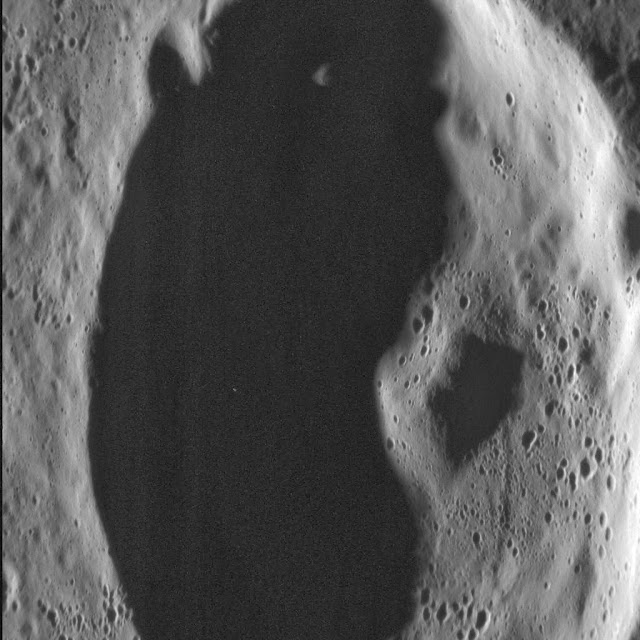This dramatic image features Hokusai in the foreground, famous for its extensive set of rays, some of which extend for over a thousand kilometers across Mercury's surface. The extensive, bright rays indicate that Hokusai is one of the youngest large craters on Mercury. Check out previously featured images to see high-resolution details of its central peaks, rim and ejecta blanket, and impact melt on its floor.
This image was acquired as part of MDIS's high-incidence-angle base map. The high-incidence-angle base map complements the surface morphology base map of MESSENGER's primary mission that was acquired under generally more moderate incidence angles. High incidence angles, achieved when the Sun is near the horizon, result in long shadows that accentuate the small-scale topography of geologic features. The high-incidence-angle base map was acquired with an average resolution of 200 meters/pixel.
Date acquired: September 17, 2013
Image Mission Elapsed Time (MET): 21704875
Image ID: 4836938
Instrument: Wide Angle Camera (WAC) of the Mercury Dual Imaging System (MDIS)
WAC filter: 7 (748 nanometers)
Center Latitude: 58.2.°
Center Longitude: 14.2.° E
Scale: Hokusai has a diameter of 114 km (71 miles)
Orientation: This image is oriented such that north is roughly to the right.
Photo credit: NASA/Johns Hopkins University Applied Physics Laboratory/Carnegie Institution of Washington
















